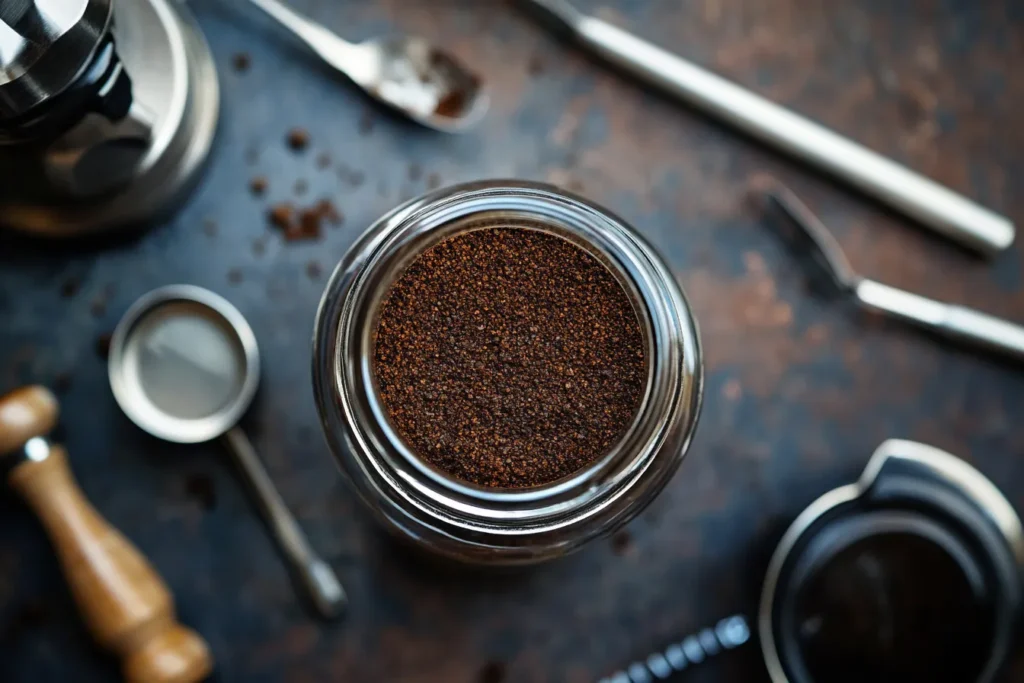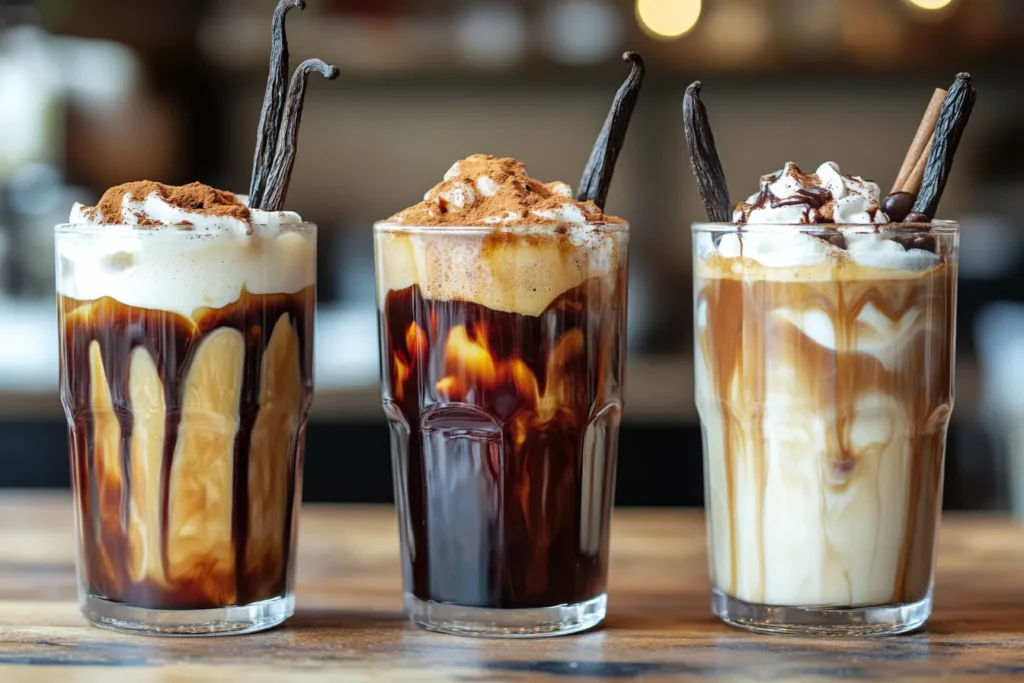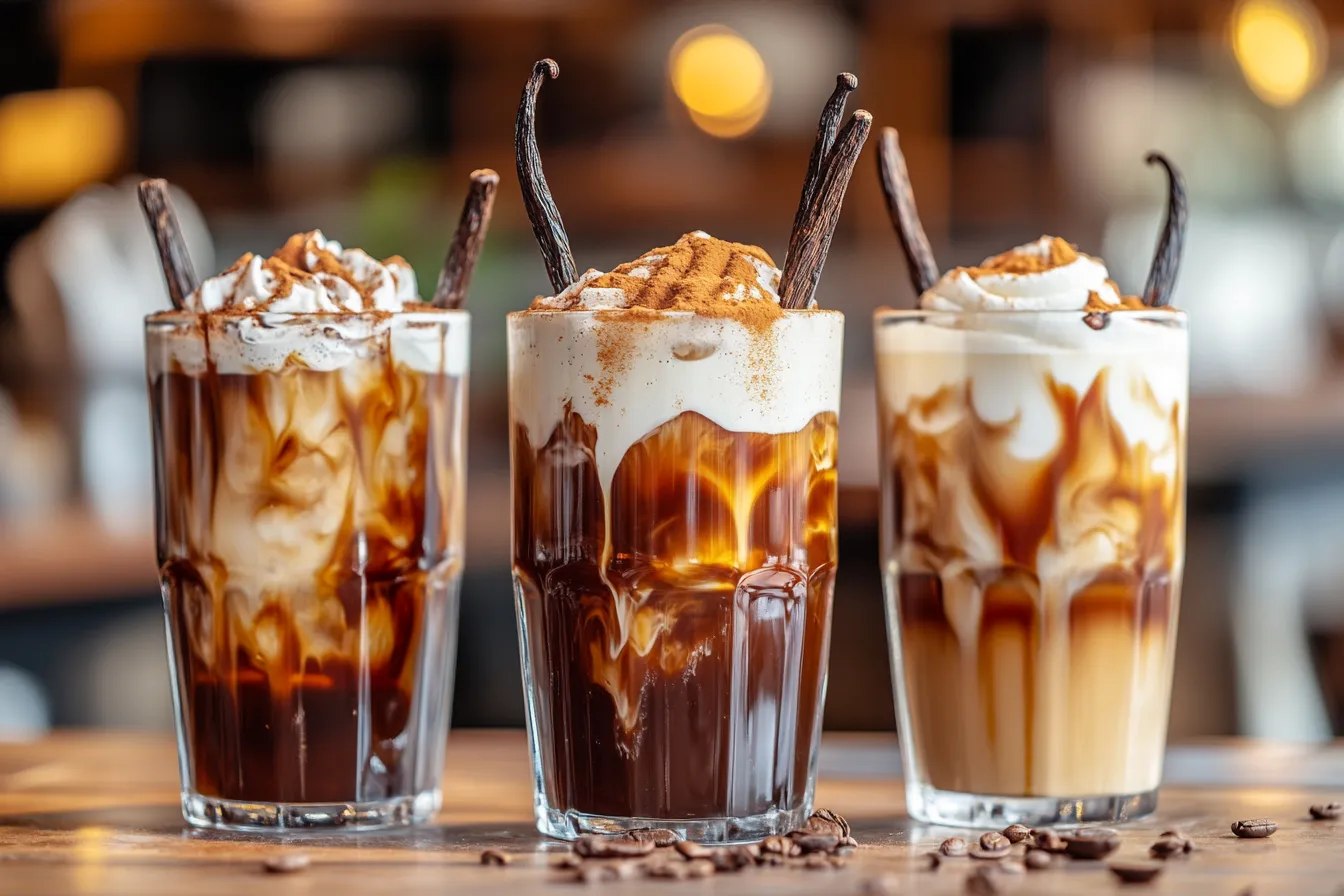Introduction
Cold brew coffee has surged in popularity over recent years, becoming a staple for coffee lovers who crave smooth, bold flavors without the acidity of traditional hot brews. Unlike iced coffee, which is brewed hot and then chilled, cold brew is steeped in cold water for an extended period, unlocking a naturally sweeter, low-acid profile that’s both refreshing and energizing. Whether you’re a café regular or a homebrew enthusiast, this guide will walk you through everything you need to know about cold brew coffee—from brewing tips and flavor variations to health insights and expert tricks. If you’ve ever wondered why everyone’s obsessed with this chilled sensation, you’re about to find out..10 Best Kratom Drink Recipes
What Is Cold Brew Coffee?
Cold brew coffee is a brewing method that involves steeping coarsely ground coffee beans in cold or room-temperature water for 12 to 24 hours. This extended brewing time allows the coffee to slowly infuse the water, resulting in a smoother, less acidic beverage that highlights the subtle flavors of the beans.
Cold Brew vs Iced Coffee
It’s easy to confuse cold brew with iced coffee, but they’re fundamentally different. Iced coffee is typically brewed hot and then cooled over ice, often resulting in a more bitter or diluted taste. Cold brew, on the other hand, skips the heat entirely. The result is a rich, mellow flavor that many people find more enjoyable—especially those with sensitive stomachs or who prefer less acidity.
Why It’s So Popular Right Now
Cold brew coffee isn’t just a summer trend—it’s a growing phenomenon worldwide. Major coffee chains like Starbucks and Dunkin’ have embraced cold brew options, while grocery stores now stock bottled versions for convenience. But beyond commercial appeal, cold brew has earned a cult following for several key reasons:
- Health benefits: Its low acidity makes it easier on digestion.
- Caffeine punch: Cold brew is often higher in caffeine than regular coffee, depending on brew ratios.
- Versatility: It pairs well with milk, creamers, syrups, and even sparkling water.
- Flavor quality: It enhances natural notes in high-quality beans, making it a favorite among connoisseurs..What Is Brazilian Mounjaro Recipe
With rising temperatures and more people brewing at home, cold brew has become a go-to choice for coffee lovers who want great taste without the heat.

How to Make Cold Brew Coffee at Home
Brewing cold brew coffee at home is surprisingly simple and requires only a few basic tools. With the right beans, grind, and patience, you can create a delicious, barista-quality drink that rivals any café. Here’s a step-by-step breakdown.
Choosing the Right Coffee Beans
When it comes to cold brew, bean selection matters. Since this method draws out subtle, smooth flavors, opt for medium to dark roasts with chocolatey, nutty, or caramel notes. These roasts tend to produce a richer, more balanced cold brew. Avoid overly acidic light roasts unless you prefer a fruitier, more tart cup.
- Single-origin beans work well for distinctive flavors.
- Blend beans offer balance and consistency.
Look for freshly roasted beans and grind them just before brewing for the best results.
Grind Size & Ratios Explained
Grind size plays a key role in your cold brew’s clarity and taste. Use coarse-ground coffee, similar in texture to sea salt. Too fine a grind can over-extract, making the brew bitter and murky.
Recommended Coffee-to-Water Ratio
For a classic cold brew concentrate:
- 1 cup (85g) of coarsely ground coffee
- 4 cups (950ml) of cold or room-temperature filtered water
For a ready-to-drink version:
- 1 cup of ground coffee to 6–8 cups of water
Adjust these ratios based on how strong you like your brew. Remember, you can always dilute the concentrate with water, milk, or ice later.
Brewing Methods
There are a few ways to brew cold brew at home, depending on what tools you have.
The Mason Jar Method
- Add your ground coffee to a large mason jar or glass pitcher.
- Pour in cold filtered water and stir to combine.
- Cover and let steep for 12 to 24 hours in the fridge or on the counter.
- Strain using a fine mesh sieve, coffee filter, or cheesecloth into a clean container.
French Press Cold Brew
- Add coarse grounds and water to your French press.
- Stir gently and place the lid without pressing down the plunger.
- Steep for 12–16 hours.
- Press the plunger slowly and pour into a bottle or jar for storage.
Tips for Perfect Extraction
- Steep longer for stronger flavor: Aim for 18–24 hours.
- Use filtered water: Impurities in tap water can affect flavor.
- Store in glass containers: Plastic can absorb odors over time.
- Experiment with ratios: Try smaller batches to find your ideal taste profile.
With these tips, you’ll be brewing rich, smooth cold brew coffee that rivals your local café—in both taste and cost.

Flavor Variations & Add‑Ins
One of the best things about cold brew coffee is how easy it is to customize. From creamy classics to bold seasonal infusions, adding flavor to your brew transforms it into something truly special. Here are some delicious variations to try at home..Apple Cider Vinegar Lemon Ginger Drink Recipe
Classic Sweet Cream Cold Brew
This popular twist combines smooth cold brew with sweet vanilla cream, balancing bitterness with sweetness and a velvety finish.
Ingredients
- 1 cup cold brew concentrate
- 2 tbsp vanilla syrup
- 1/4 cup heavy cream (or half & half)
Directions
- Fill a glass with ice.
- Add cold brew concentrate and vanilla syrup.
- Top with cream and stir gently, or leave it layered for a café-style look.
You can substitute vanilla syrup with caramel or hazelnut syrup for a different spin.
Flavored Cold Brew Recipes
Experiment with spices, extracts, and even fresh ingredients to personalize your brew.
Vanilla Cinnamon Cold Brew
- Add 1 tsp of vanilla extract and a cinnamon stick to your cold brew while steeping.
- Strain and serve with a splash of milk or sweetener.
Mocha Cold Brew
- Mix 1 tbsp of cocoa powder or chocolate syrup with your cold brew.
- Add oat milk for a creamy, dairy-free mocha option.
Citrus Cold Brew
- Add orange or lemon zest during the steeping process.
- The citrus oils enhance brightness and freshness.
These small additions can dramatically enhance your drink without overpowering the natural coffee flavors.
Dairy-Free Options
Many people prefer non-dairy alternatives in their cold brew. Here are some favorites:
- Oat milk: Smooth, slightly sweet, and blends beautifully.
- Almond milk: Light and nutty.
- Coconut milk: Rich and tropical—great with chocolate or caramel flavors.
Syrups & Sweeteners
Customize your sweetness level with natural or flavored options:
- Simple syrup: A basic 1:1 sugar and water mix.
- Maple syrup: Adds warmth and complexity.
- Honey or agave: Great for floral undertones.
You can even batch-make your own syrups with herbs like lavender or mint for a creative touch.
Whether you enjoy your cold brew sweet, spiced, or bold, there’s a variation that suits your taste.
Serving & Storage Tips
Cold brew’s versatility extends beyond flavor—it also stores well and can be served in many creative ways. Mastering the best practices for serving and storing ensures that every cup tastes fresh and flavorful.
How to Serve Cold Brew Coffee
You can enjoy cold brew straight, over ice, or mixed with other ingredients for added flair. Here are some ideas:
- On the rocks: Pour over ice for a quick, refreshing drink.
- Diluted: Mix cold brew concentrate with an equal part water or milk to reduce intensity.
- Blended: Add cold brew, milk, and ice to a blender for a frothy iced latte.
- Sparkling cold brew: Combine with sparkling water and citrus for a fizzy pick-me-up.
Always serve in a glass or BPA-free tumbler to preserve taste and avoid odor absorption.
How to Store Cold Brew
Proper storage keeps your cold brew tasting fresh for days:
- Refrigerate immediately after brewing.
- Store in an airtight glass jar or bottle.
- Cold brew concentrate can last up to 2 weeks.
- Ready-to-drink cold brew stays fresh for about 5 to 7 days.
Avoid metal containers, which can alter the flavor, and always use clean utensils when pouring to avoid contamination.

Health Benefits vs Risks
Cold brew is more than just a trendy drink—it can offer real health benefits when consumed in moderation. But like all caffeinated beverages, it’s best enjoyed mindfully.
Health Benefits of Cold Brew Coffee
- Lower acidity: Easier on the stomach for those with acid reflux or sensitivity.
- High antioxidant content: Coffee is rich in chlorogenic acid, which can help combat inflammation.
- Boosts metabolism: The caffeine in cold brew may support fat-burning and energy.
- Improved focus and mood: Caffeine helps stimulate brain function, improving alertness.
Cold brew often contains more caffeine than hot coffee, which can enhance productivity but also requires mindful consumption.
Potential Risks & Considerations
- Caffeine overload: Some cold brew concentrates have double the caffeine of regular coffee, which can lead to jitteriness, insomnia, or increased heart rate if consumed in excess.
- Hidden sugars: Pre-bottled or flavored versions often contain added sugars—check labels if you’re watching your intake.
- Not for everyone: Pregnant individuals, those with high blood pressure, or those sensitive to caffeine should consult with a healthcare provider before consuming regularly.
Healthier Alternatives
You can enjoy cold brew without the drawbacks by:
- Limiting daily intake to 1–2 servings.
- Using non-dairy milk and natural sweeteners.
- Opting for lower-caffeine blends.
Cold brew coffee is both a delicious indulgence and a potential health ally when enjoyed responsibly.
Cold Brew Coffee FAQ
How long should I steep cold brew coffee?
For optimal flavor, steep cold brew for 12 to 24 hours. A longer steeping time (18–24 hours) produces a stronger, richer concentrate. For a lighter brew, 12 hours is sufficient.
Can I make cold brew with any coffee?
Technically yes, but the best cold brew coffee is made with medium to dark roasts. These provide smoother, richer flavors and lower acidity, which cold brew enhances.
Is cold brew stronger than regular coffee?
Yes—cold brew concentrate often contains more caffeine per ounce than drip coffee. However, when diluted, it can have similar caffeine levels. Always adjust to your personal tolerance.
Can I heat cold brew coffee?
Absolutely! Cold brew can be gently heated for a low-acid hot coffee alternative. Just don’t boil it—microwave or stovetop warming is best for preserving flavor.
Is cold brew healthier than hot coffee?
Cold brew tends to be lower in acidity and may be easier on sensitive stomachs. However, both cold and hot brews offer similar antioxidant benefits. The key difference is personal preference and caffeine sensitivity.
How long does cold brew last in the fridge?
- Concentrate: Up to 2 weeks
- Diluted cold brew: Best consumed within 5–7 days
Always store in a sealed glass container for best freshness.
Where to Buy Ready-Made Cold Brew
If you don’t want to brew at home, there are many high-quality cold brew options available in stores and online. Here are some trusted sources:
- Stumptown Cold Brew Coffee
Anchor Text: Cold Brew Bottles by Stumptown
Why it’s great: Organic beans, smooth blends, wide flavor range. - Califia Farms Cold Brew
Anchor Text: Dairy-Free Cold Brew from Califia Farms
Why it’s great: Plant-based, low sugar, available in most grocery chains. - Wandering Bear Coffee
Anchor Text: Boxed Cold Brew Coffee by Wandering Bear
Why it’s great: Convenient boxed packaging, bold coffee flavor, long shelf life.
These pre-made options are ideal for busy mornings, travel, or when you want café-quality cold brew with zero effort.
Conclusion
Cold brew coffee isn’t just a beverage—it’s a lifestyle for those who appreciate smoother, bolder, and more versatile coffee experiences. Whether you’re brewing it at home, experimenting with exciting flavors, or grabbing a convenient ready-made bottle, cold brew fits into any routine with ease.
Thanks to its naturally sweet taste, lower acidity, and powerful caffeine kick, it has carved a niche among coffee enthusiasts and casual drinkers alike. With simple methods and a few quality ingredients, you can make barista-level cold brew from your kitchen. And with so many flavor options and health-friendly perks, there’s always a new way to enjoy it.
Now that you’re equipped with everything you need to know—from brewing to storage and even where to buy it—you’re ready to become your own cold brew expert. Cheers to chilled perfection in every cup!

Name: Cold Brew Coffee
Ingredients
Equipment
Method
- Instructions:
- Add the ground coffee to a clean mason jar or French press.
- Pour in the cold filtered water and stir gently to combine.
- Cover the container and let it steep for 12–24 hours at room temperature or in the refrigerator.
- Strain the coffee through a fine mesh sieve, coffee filter, or cheesecloth into a clean container.
- Serve over ice, dilute with water or milk if desired, and enjoy!
